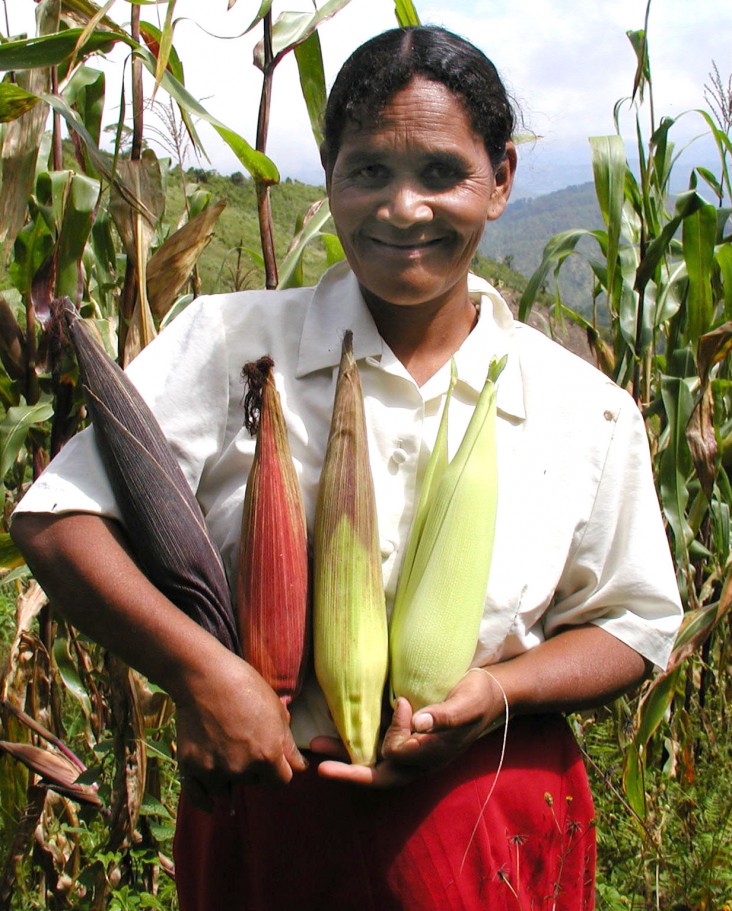Accessing Nature’s Bounty in Honduras

Tucked away in the remote village of El Prado, near the city of San Marcos de Ocotepeque in mountainous western Honduras, Ovidio Escalón and his 11 children lived on his crops of corn and beans, leaving very little money for other purchases. Ovidio never imagined that his family's path out of subsistence agriculture would be lined with carrots.
But starting in 2012, Ovidio began working with USAID's ACCESO project, which trained him on raised bed preparation, proper fertilizer use, and drip irrigation. Drip irrigation helps save precious water by delivering it directly to the roots of each plant, rather than to the plants' leaves or to the empty spaces between them. Greatly minimizing the water loss from runoff and evaporation that occurs with flood and traditional overhead irrigation, he was able to grow more diverse crops.
In Honduras, the second poorest country in the Western Hemisphere, 66 percent of people live below the poverty line and 45 percent live in extreme poverty. Almost three quarters of the extremely poor live in rural areas. Chronic malnutrition affects nearly half of all people in rural areas. ACCESO, a four-year USAID project in western Honduras that began in April 2011, lifts rural households out of poverty and promotes improved nutrition through access to economic development opportunities, modern farming techniques, and improved health and nutrition practices.
The project increases incomes by encouraging straightforward production practices and introducing market-driven programs for high-value cash crops, as well as expanding off-farm microenterprise and employment opportunities. So far the project has helped more than 2,000 farmers install drip irrigation systems on their plots. About 30,000 households have invested more than $320,000 in irrigation infrastructure, leveraging $250,000 from ACCESO and other partners.
A direct line can be drawn between the income created by technologies like drip irrigation and the health and nutrition of farmers and their families. According to Andy Medlicott, director of the ACCESO program, "If we don't have the technologies in place, we can't respond to the market demands, and the growers won't make money. If they don't make money, our activities on the health and nutrition side are short-lived."
Farmers in Honduras have greatly benefited from the new irrigation methods. Efficient use of water coupled with reliable access to it allows farmers to diversify into high-value crops including tomatoes, onions, lettuce, cabbage, and carrots and improves the productivity of traditional crops such as maize, beans, and coffee. The higher incomes that crop diversification generates enable families to purchase food to supplement their subsistence diet of basic grains.
ACCESO has achieved some dramatic changes through surprisingly small investments. Ovidio spent just $31 to plant and drip-irrigate carrots on 629 square meters of previously uncultivated land. His investment of time and money resulted in a first harvest of 1,200 kilograms of carrots, which, with help from ACCESO’s marketing specialist, fetched $360 from a national supermarket distributor. He plans to use much of his newly increased income to invest in quality fertilizer and other inputs. Ovidio said drip irrigation and access to markets has changed his life in ways he would never have dared imagine. “Not even in my wildest dreams had I thought of planting carrots, let alone selling them,” he said.
A. Gambrill







Comment
Make a general inquiry or suggest an improvement.